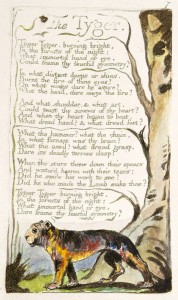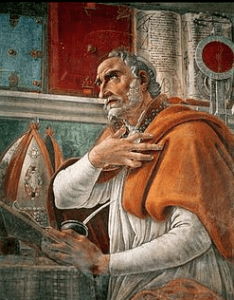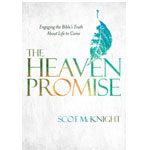 Over the last three or four years I have known
Over the last three or four years I have known six, make that seven, friends or acquaintances who have died of cancers (only a little less than the previous two or three decades of my life). While most of the earlier cases I had known were older people (including one of my grandmothers), four of the most recent six seven had school aged children. The cancers left a total of eleven children ranging from preschool to early college mourning the loss of one parent. How can we make sense of this?
Evolutionary biology tells us that mutations provide the mechanism for change creating the wonderful diversity of life we experience. While I think the expression of evolution as red in tooth and claw is wrong, the connection between evolution and cancer is, it appears, very real. Evolution relies on the occasional “mistake” and many cancers also develop because of this capacity for error built into the functioning of cells.
The questions are not limited to evolution and cancer of course. Volcanoes, tornadoes, earthquakes, floods, tsunamis, and hurricanes all raise the similar questions. These all cause pain and suffering that cannot be laid at the feet of some sinful action justifying the pain, and all are intrinsic features of the nature of the world in which we live. They are necessary components of our functioning, living, earth.
But back to evolution. A question that often comes up in any discussion of science and faith centers on this very issue. How could a good God use a design process that intrinsically involves so much pain and suffering?
What does this tell us about God’s good creation?
Can the Book of Job provide any insight?
This brings us to the third reflection on the framework of God’s speeches as he corrects and instructs his servant Job. Job has been suffering for reasons completely unknown to him. His children and a number of his servants have been killed and his health is gone. Although we may recognize the book of Job as a story to convey a message – and shouldn’t put much emphasis on it – the children, servants, their families, and Job’s wife also suffer for no deserved reason.
Job and his friends, including Elihu, were all convinced that God’s world operated on a retribution principle, and that God’s justice demanded the application of this principle in every instance. Job’s friends (including Elihu) all questioned Job’s righteousness. It was readily apparent to them that Job’s suffering was a consequence of his unrighteous behavior. He deserved what he got. In the view of his three friends Job was being punished. Elihu allowed that there could also be an element of correction – but nonetheless Job warranted the suffering he experienced. The only appropriate response of Job was repentance.
Job knew he had done nothing to warrant his suffering, and we know he was right. In the context of this book Job’s suffering is a test of God’s principles for the functioning of the cosmos. Walton, in his commentary on Job, points out that “the book never intended to provide an explanation for human suffering.” (p. 414) God does not defend his justice, nor does he explain Job’s suffering. Rather God calls Job, and by application us, to trust God’s wisdom in the design and operations of the cosmos.
But even this has implications for how we should think about human suffering and supposed “flaws” in the design of God’s creation. Walton reflects on these questions at greater length in this section on theological issues (pp. 416-422). Because this discussion deals with creation, and the nature of creation, it also harks back to Genesis 1-3.
Genesis 1-3. God brought the world into being, he created order out of disorder or chaos.
In the beginning God created the heavens and the earth. Now the earth was formless and empty, darkness was over the surface of the deep, and the Spirit of God was hovering over the waters. (Gen. 1:1-2)
Walton has a long discussion of these two verses in his commentary on Genesis. The tohu wa bohu (formless and empty) of v. 2 gives a clear indication of a disorder out of which creation began.
By logic alone the words can be seen to concern functionality, and analysis of the Hebrew confirms the conclusion that these terms indicate that the cosmos was empty of purpose, meaning, and function – a place that had no order or intelligibility. … It is the condition that bara’, by its nature, remedies. (Genesis p. 73)
 The serpent is another important piece of the puzzle. Walton has a fairly traditional view of the fall as a historical event, and this comes out in both of these commentaries on Genesis and on Job. This would be a good subject for a future post, but it doesn’t prevent him from looking carefully at the text in the context of ancient Near Eastern culture. A few important points:
The serpent is another important piece of the puzzle. Walton has a fairly traditional view of the fall as a historical event, and this comes out in both of these commentaries on Genesis and on Job. This would be a good subject for a future post, but it doesn’t prevent him from looking carefully at the text in the context of ancient Near Eastern culture. A few important points:
When the Israelite audience considered the serpent, certain ideas would be associated with it in their minds. In the ancient world the serpent was viewed as possessing a mythical wisdom and a demonic and hostile creature. (Genesis p. 203)
In the context of Genesis, the serpent is described as crafty (‘arum) but not sinister or magical. (Genesis p. 203)
It is important to recognize that the serpent is simply classified as one of the wild animals. This classification mitigates any speculation concerning an Israelite understanding of a hidden identity of the serpent. There is no god or demon or genie lurking beneath the guise of the serpent. (Genesis p. 204)

But, the serpent was in the Garden, a point that cannot be overlooked. The serpent is a creature, one of the wild animals – but it is also a “chaos creature,” an identification Walton makes in the discussion of Job 38-41. The serpent was in the garden before Adam and Eve ate of the fruit.
Creation includes chaos creatures, and God’s provision for predators. In the Old Testament, including the book of Job, these are not associated with the Fall of Adam and Eve or their exile from the Garden. Walton has a long discussion of many aspects of this.
The essence of the idea of creation in the ancient world is that God brought order to the cosmos in his creative acts. … Order is imposed on the material of the cosmos as well as on the functions of the cosmos. In the ancient world people were more interested in and focused on function, whereas we, in the modern world, are often more interested in and focused on the material cosmos when we talk about creation.
Nevertheless, order has been imposed neither fully nor equally on the cosmos. As mentioned in passing in Original Meaning, this diverse state is evident in Genesis in the description of the garden of Eden, in the creation of chaos creatures, and in the incorporation of darkness and the Sea. (Job p. 418)
I’ve commented on these ideas in a number of posts over the years – in particular recently The Garden in Ancient Context and Wait! No Sea? . There is no indication within scripture that when God saw that it was good it meant a total absence of disorder in creation, some kind of utopian perfection. The presence of the serpent indicates the presence of disorder in creation, and one can argue that the presence of darkness and the sea meant the same to an ancient Near Eastern audience. This isn’t twisting the text to match modern scientific ideas, but reading the text, in context, for all it is worth as inspired by God.
Walton looks at the Fall in Genesis 3 like this: “Adam and Eve had the task of expanding the ordered cosmos …, and when they sinned they were driven from the ordered space to the area outside the garden, where things were much more difficult, for order was less evident.” (Job p. 419)
Disorder is the evidence of creation in progress a mission in which humans, created in the image of God were to participate. “Biblical theology substantiates in both Testaments the continued existence of disorder – both that which remained after creation and that brought about by sin – and amplifies the effects of disorder on the human world.” (Job p. 419) This idea is not a modern invention, and has roots in a number of Christian thinkers throughout the centuries.
In the next post I will look more closely at the application of these ideas in Job and for us from the commentaries of Walton and Longman. But this is more than enough for one post.
What do Job, and Genesis, tell us about creation?
Are cancer and earthquakes, like the serpent, the sea, and darkness, simply something about which we must defer understanding, trusting God’s wisdom?
If you wish to contact me directly you may do so at rjs4mail [at] att.net.
If interested you can subscribe to a full text feed of my posts at Musings on Science and Theology.











